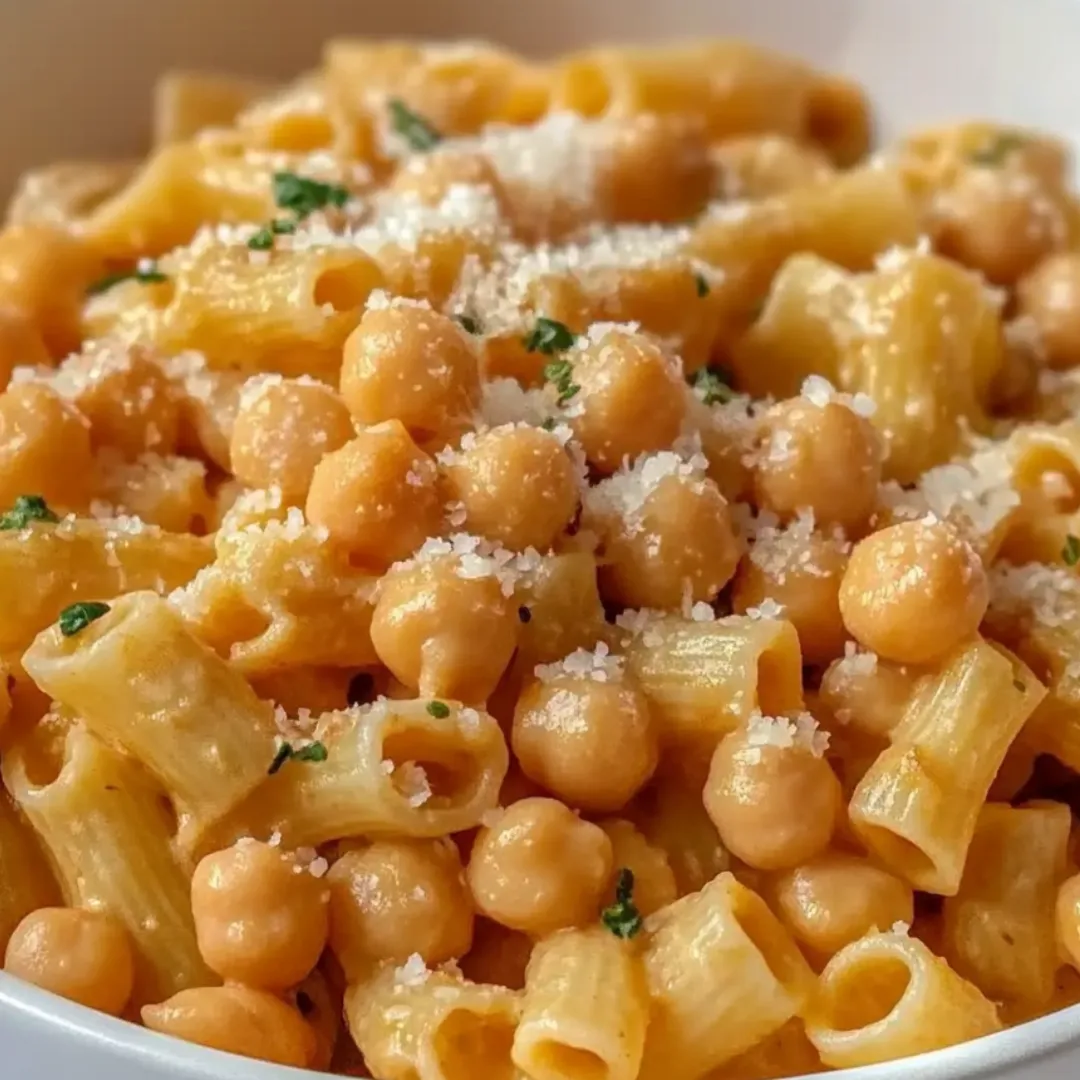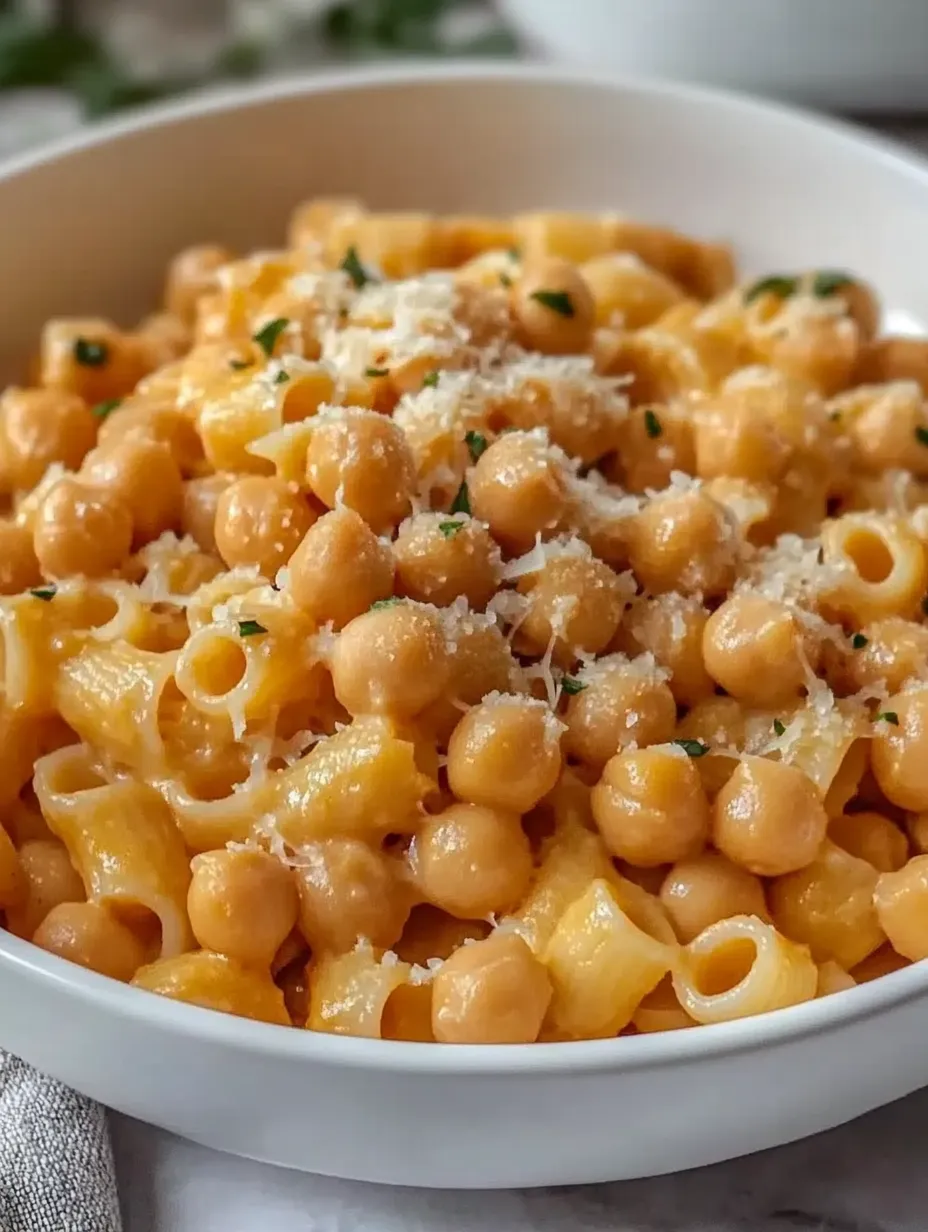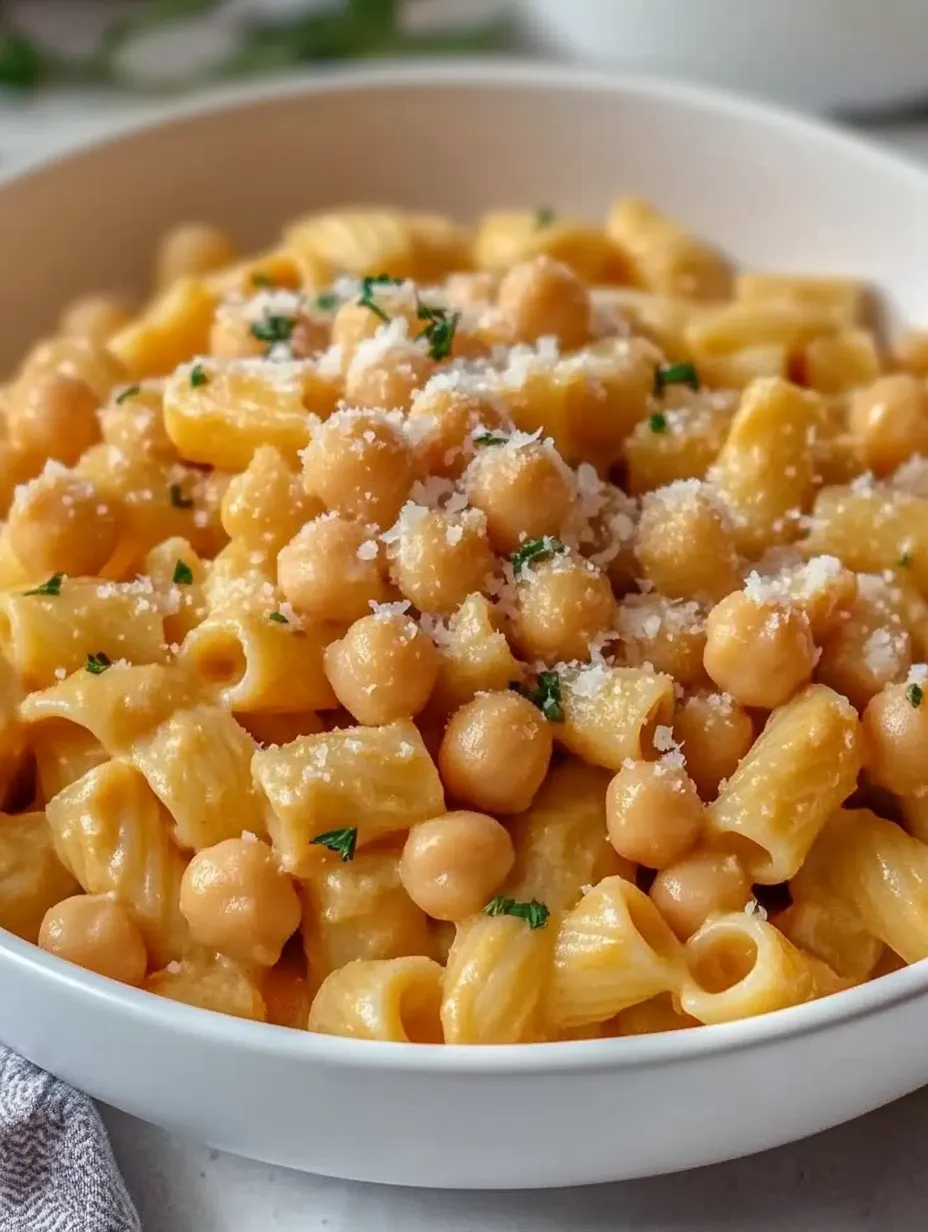 Save Pin
Save Pin
This simple chickpea and pasta blend makes everyday pantry items shine as a soul-warming Italian staple. Rich, filling, and incredibly comforting, this down-to-earth combination has kept Italian households going for countless years, using just a handful of basic ingredients from your kitchen.
I stumbled on this dish during a hectic stretch when my fridge was almost empty. My first bite felt like I'd been whisked away to a cozy Italian eatery, and now it's the number one meal my friends ask for whenever they drop by on cool nights.
What You'll Need
- Chickpeas: they give you protein and turn partly mushy to thicken things up
- Ditalini pasta: those tiny tubes that grab onto sauce wonderfully
- Olive oil: go for extra virgin if you can
- White onion or shallots: they make a nice sweet base
- Garlic cloves: adding that must-have punch of flavor
- Fresh rosemary: brings woodsy scents that work magic with chickpeas
- Tomato paste: packs intense flavor that makes everything richer
- Chili flakes: for a mild kick that won't burn your mouth
- White wine: loosens the tasty bits from the pan and cuts through richness
- Vegetable stock: makes the backbone of your tasty sauce
- Pecorino cheese: adds a salty tang and helps everything turn silky
Cooking Guide
- Start Your Base:
- Warm olive oil in a pan over medium heat until it glistens. Toss in chopped onion and let it cook 5–6 minutes till see-through and getting golden at the edges. This slow cooking brings out sweetness that makes your dish special.
- Add Flavor Boosters:
- Throw in sliced garlic and cook another 1–2 minutes till you can smell it but before it browns. Right away add the chopped rosemary and chili flakes, keeping everything moving for about a minute. This quick heating wakes up their flavors and spreads them throughout your dish.
- Deepen With Tomato:
- Mix in tomato paste and keep stirring for roughly 2 minutes till it gets a bit darker and smells sweet. This quick cooking changes the raw tomato taste into something much more interesting.
- Make Your Sauce:
- Splash in white wine and scrape up any stuck bits from the bottom. Let it bubble away for 2–3 minutes till you can't smell the alcohol anymore. Add chickpeas and stock, bringing everything to a gentle bubble. Smash about a quarter of the chickpeas against the side with your spoon. This makes everything creamy without needing any cream.
- Let Pasta Swim In Sauce:
- Drop your dry pasta straight into the bubbling mix, stirring often so it doesn't stick. Cook till pasta feels tender but still has a tiny bit of firmness when you bite it. The starch from the pasta helps thicken everything up and makes the sauce stick better.
- Mix In Cheese:
- Take the pot off the heat and right away stir in your Pecorino until it's completely melted. The leftover warmth turns your sauce into a smooth, unified mix that covers every single bite.
 Save Pin
Save Pin
The ordinary chickpea really steals the show here. While wandering through central Italy, I found a tiny little food spot where the cook told me pasta e ceci was typically eaten on Fridays when folks skipped meat. Her version used chickpeas grown and dried by her family, giving it an amazing taste I try to capture whenever I make this at home.
Background Story
Pasta e ceci comes from Italy's cucina povera tradition of turning cheap foods into hearty meals. Going back hundreds of years, this dish kept farm families fed through cold winters when fresh veggies weren't around. Mixing beans and pasta gave people complete protein, making it super important when food was scarce. You'll find different versions across Italy, from Rome's soupier take to Tuscany's thicker style, but they all share the beautiful idea of turning simple pantry stuff into something way more special than you'd expect.
Getting The Feel Just Right
When perfectly made, pasta e ceci should be smooth and a bit thick, coating each pasta piece without getting gummy. The trick is smashing some chickpeas but keeping others whole so you get different textures in each bite. Cook your pasta a little less than what the box says since it'll soak up more liquid as it sits. If your dish gets too thick after sitting awhile, just add a splash of hot water or stock before you eat to get that smooth, velvety feel that Italian grandmas have gotten just right over the years.
Change It Up
This dish works great as a starting point you can play with. For deeper flavor, throw in some anchovy when you cook the garlic – they'll melt away completely but add amazing richness. Swap white wine for red to make it bolder, especially in cold weather. Toss in kale or spinach during the last few minutes for color and extra goodness. Try different herbs like thyme or sage instead of rosemary. For a fancier finish, drizzle really good olive oil and crack fresh black pepper right before serving to create layers of smell and taste that lift this simple dish to new heights.
 Save Pin
Save Pin
Common Recipe Questions
- → Can I use a different type of pasta?
Absolutely, you can swap ditalini for any small pasta you like such as elbow macaroni or orzo based on what you have at home.
- → What can I use instead of white wine?
Try using white wine vinegar or a bit of fresh lemon juice when you don't have wine handy. They'll add that same tangy kick.
- → How do I store leftovers?
Pop any extras in a sealed container and keep in the fridge for up to 5 days. When warming it up, add a little veggie stock to keep it nice and creamy.
- → Can I add more vegetables to this dish?
You can definitely throw in carrots, celery, or some juicy cherry tomatoes to boost the flavor and give the dish more texture.
- → Is this dish suitable for vegans?
To make this work for vegans, just skip the Pecorino cheese or go with a dairy-free cheese option instead.
